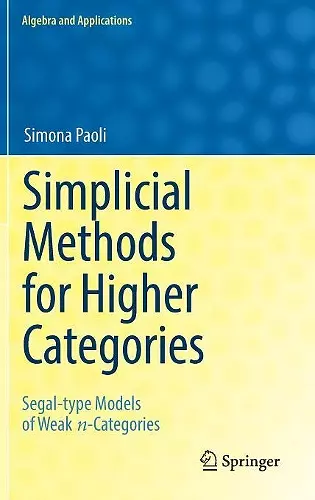Simplicial Methods for Higher Categories
Segal-type Models of Weak n-Categories
Format:Hardback
Publisher:Springer Nature Switzerland AG
Published:14th Jun '19
Currently unavailable, and unfortunately no date known when it will be back

This monograph presents a new model of mathematical structures called weak n-categories. These structures find their motivation in a wide range of fields, from algebraic topology to mathematical physics, algebraic geometry and mathematical logic.
While strict n-categories are easily defined in terms associative and unital composition operations they are of limited use in applications, which often call for weakened variants of these laws. The author proposes a new approach to this weakening, whose generality arises not from a weakening of such laws but from the very geometric structure of its cells; a geometry dubbed weak globularity. The new model, called weakly globular n-fold categories, is one of the simplest known algebraic structures yielding a model of weak n-categories. The central result is the equivalence of this model to one of the existing models, due to Tamsamani and further studied by Simpson. This theory has intended applications to homotopy theory, mathematical physics and to long-standing open questions in category theory.As the theory is described in elementary terms and the book is largely self-contained, it is accessible to beginning graduate students and to mathematicians from a wide range of disciplines well beyond higher category theory. The new model makes a transparent connection between higher category theory and homotopy theory, rendering it particularly suitable for category theorists and algebraic topologists. Although the results are complex, readers are guided with an intuitive explanation before each concept is introduced, and with diagrams showing the interconnections between the main ideas and results.
“This book is a research monograph and is primarily aimed primarily at professionals and advanced graduate students working in topology or category theory. It would also be useful to those working in theoretical physics or algebraic geometry who use higher category methods. … The author’s solution to the homotopy hypothesis is appealing as well as geometrically and categorically insightful.” (MAA Reviews, April 7, 2020)
ISBN: 9783030056735
Dimensions: unknown
Weight: unknown
343 pages
1st ed. 2019